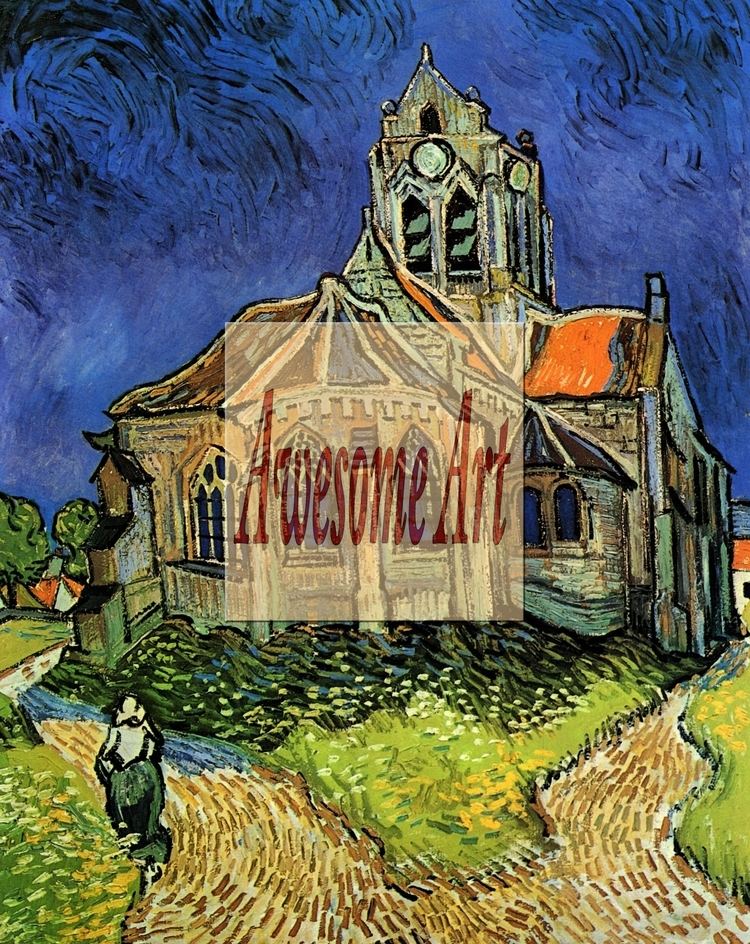Year 1890 (1890) Media Canvas, Paint, Oil paint | Catalogue F789 JH2006 Website musee-orsay.fr/en/ Dimensions 74 cm x 94 cm Created June 1890 | |
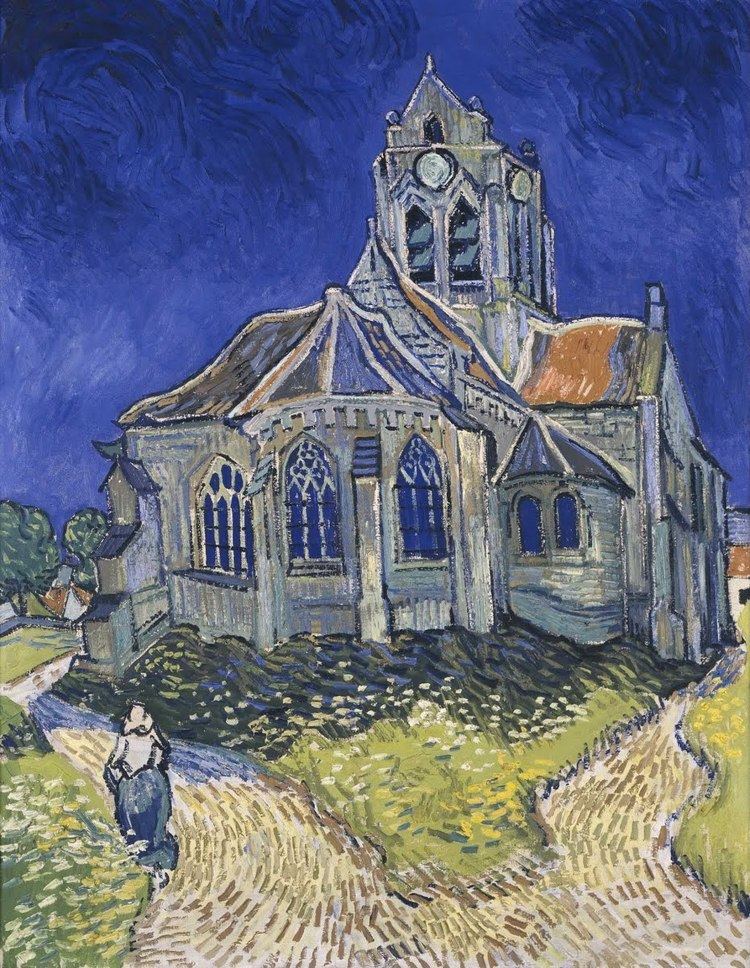 | ||
Periods Modern art, Post-Impressionism Similar Vincent van Gogh artwork, Artwork at Musée d'Orsay, Landscape paintings | ||
The church at auvers hidden image discovery
The Church at Auvers is an oil painting created by Dutch post-impressionist artist Vincent van Gogh in June 1890 which now hangs in the Musée d'Orsay in Paris, France.
Contents

The actual church is in Place de l'Eglise, Auvers-sur-Oise, France, 27 kilometres (17 mi) north-west of Paris.
History

The Church at Auvers — along with other canvases such as The Town Hall at Auvers and several drawing of small houses with thatched roofs — is reminiscent of scenes from his Nuenen period. A certain nostalgia for the north had already been apparent in his last weeks in Saint-Rémy-de-Provence: in a letter written a couple of weeks before his departure, he wrote "While I was ill I nevertheless did some little canvases from memory which you will see later, memories of the North."
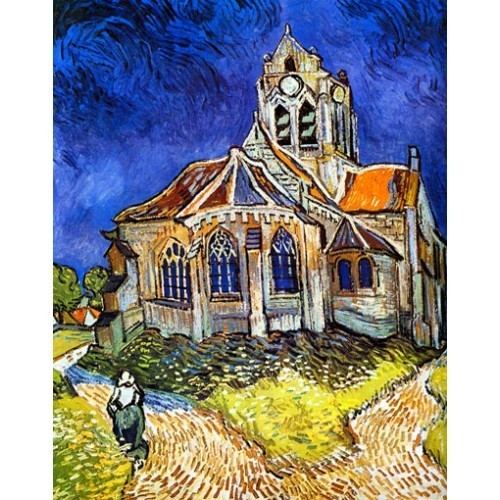
He specifically refers to similar work done back at Nuenen when he describes this painting in a letter to his sister Wilhelmina on 5 June 1890:
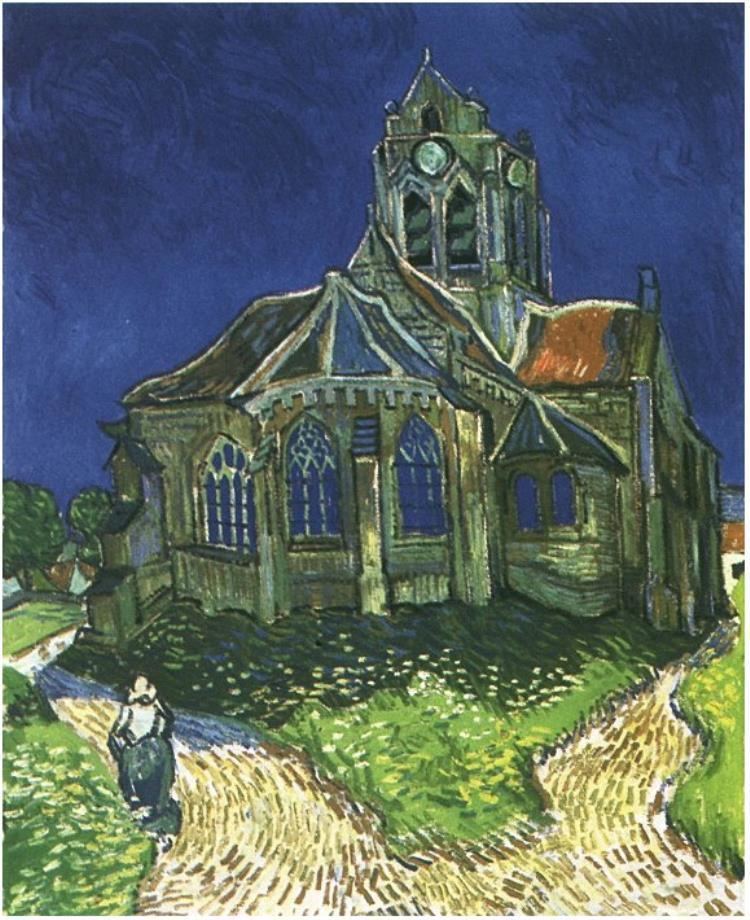
I have a larger picture of the village church — an effect in which the building appears to be violet-hued against a sky of simple deep blue colour, pure cobalt; the stained-glass windows appear as ultramarine blotches, the roof is violet and partly orange. In the foreground some green plants in bloom, and sand with the pink flow of sunshine in it. And once again it is nearly the same thing as the studies I did in Nuenen of the old tower and the cemetery, only it is probably that now the colour is more expressive, more sumptuous.
The "simple deep blue" was also used in Portrait of Adeline Ravoux, painted in the same short period in Auvers-sur-Oise.

The foreground of The Church at Auvers is brightly lit by the sun, but the church itself sits in its own shadow, and "neither reflects nor emanates any light of its own." After Van Gogh had been dismissed from the evangelical career he had hoped to continue in the Borinage, Belgium, he wrote to his brother Theo from Cuesmes in July 1880, and quoted Shakespeare's image from Henry IV, Part 1 of the dark emptiness inside a church to symbolize "empty and unenlightened preaching": "Their God is like the God of Shakespeare's drunken Falstaff, 'the inside of a church'"
The motif of diverging paths also appears in his painting Wheat Field with Crows.
In popular culture
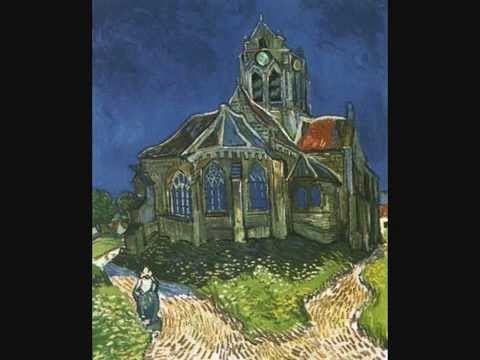
The Church at Auvers plays a prominent role in "Vincent and the Doctor", the tenth episode of the fifth series of the revived science-fiction television programme Doctor Who in 2010. In it, the painting depicts a strange, griffin-esque creature (called a "krafayis") at a window of the church, which signifies to the show's time-travelling protagonist, the Doctor, that something evil was lurking in Auvers-sur-Oise in June 1890. Only when van Gogh himself, played by Tony Curran, defeats the creature at the church, does the painting revert to its original, unaltered, state. The krafayis is later revealed to have been blind, with blindness to the colors and shapes of the world and sky (as Vincent saw them) being a recurring theme of the episode.
